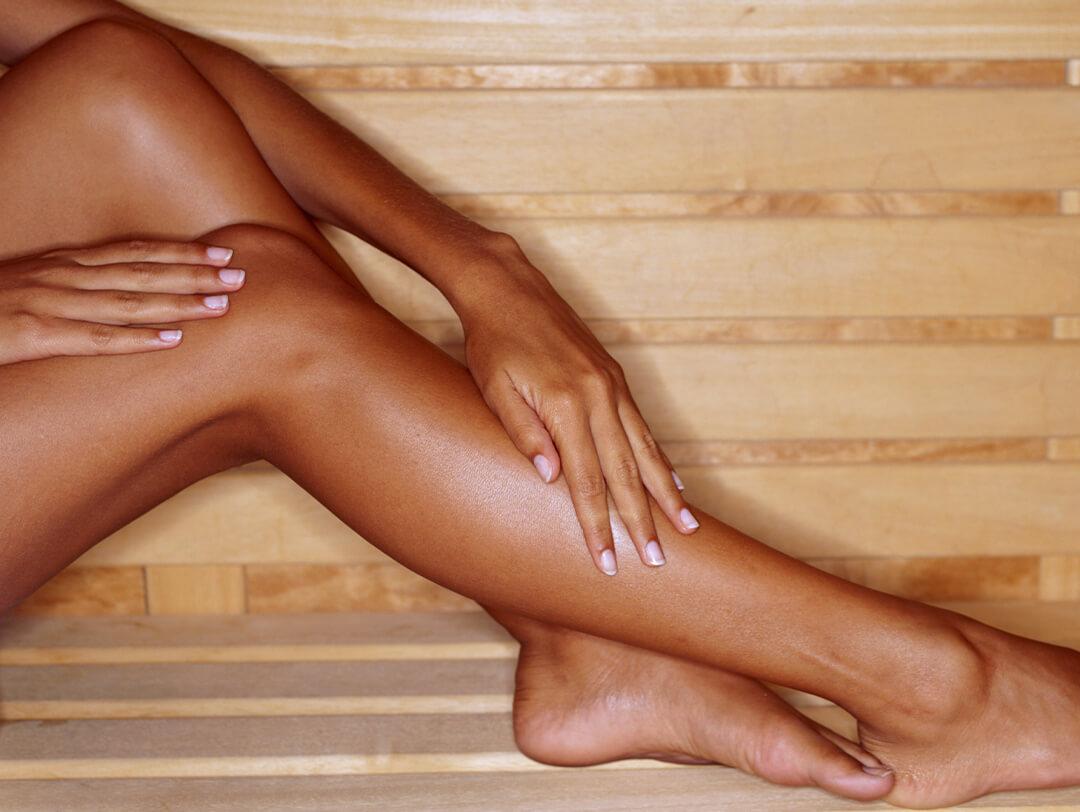WTH Are Strawberry Legs? Here’s Everything You Need to Know



IPSY Editors


We love to embrace our skin and all its imperfections, but sometimes it can be unpredictable. One day you’ve got the softest skin ever and the next you've got small black dots all over your legs. If you’ve experienced this, you know the struggle. It’s a skin condition often referred to as "strawberry legs." (Which you may have guessed, isn't the official medical term.) Most often, strawberry legs are a benign skin condition, and if you'd like to do what you can to get your smooth skin back, we're here to help. Below, we're diving into what exactly strawberry legs are, what causes them, and a few home remedies you can try to make them less visible.


It's about glam time you treated yourself.
MEET THE EXPERT
Deirdre Connolly, MD, is a board-certified dermatologist at Schweiger Dermatology Group in Long Island, New York.
What are strawberry legs?
Strawberry legs are legs that have small, dark dots on them. These spots often look similar to the seeds on strawberries (hence the cheeky nickname). Frequently, these dark spots are small blackheads (formally referred to as open comedones). They're clogged hair follicles that have a mixture of oil, bacteria, and/or dead skin trapped inside. Because strawberry legs is a general term for the appearance of small bumps on the legs, it can also refer to a range of other skin conditions besides blackheads. Sometimes, ingrown hairs or razor burn are the culprit for strawberry legs. Other times, it may actually be a condition called keratosis pilaris (more on that condition below).
What causes strawberry legs?
If you just started noticing the small, dark dots on your legs, it's likely that your strawberry legs are due to shaving. When a hair follicle or open pore gets clogged with excess oil, dirt, or dead skin after shaving, it oxidizes and turns black, hence the small dark spots. If you naturally have large pores, these blackheads may be more visible. If you have small red bumps that have been there for a long time, there’s chance that it’s actually keratosis pilaris, a generally painless condition in which small red bumps form on the skin (most commonly the upper arms) due to a buildup of keratin, the essential protein found in hair, skin, and nails. The excess keratin can block the hair follicle, causing the bumps. Keratosis pilaris is generally a genetic condition and is typically treatment-resistant, however, there are a few home remedies that may help (see tip #3 below).
How to prevent strawberry legs
1. Always shave with the grain
One of the most common causes of razor burn and shaving irritation is shaving against the direction of hair growth. How do you prevent it? You guessed it–simply shave in the direction of hair growth. While it may be tempting to shave against the grain for a super close shave, doing so causes the razor blade to tug at the hair before it cuts it. Sometimes it also causes the hair to get cut so short that a layer of skin grows over the top before the hair can grow back, which can, in turn, cause ingrown hairs.
2. Always shave using warm water
"When shaving your legs, prep the skin by allowing enough time for the skin and hair to soften in a warm environment," says dermatologist Deirdre Connolly, MD, of Schweiger Dermatology Group. Allowing the hair to soak in warm water before shaving will open up the pore, soften the hair, and can even help it to stand up off the skin (allowing for a closer shave).
3. Exfoliate frequently
"Exfoliating can help prevent dead skin cells from clogging the razor blades, creating a closer shave," says Connolly. It can also make it easier for hairs to break through the skin’s surface, reducing the risk of ingrown hairs. "Loofahs are great for super gentle exfoliation and body scrubs can be a great choice if you don't have super sensitive skin. You can also look for body washes that have glycolic acid, lactic acid, or salicylic acid listed as a primary ingredient. These are chemical exfoliators that gently break down dead skin cells and can, therefore, help to clear up clogged pores and improve the skin's texture. Body washes and body lotions with these ingredients can be a particularly good solution if you think you may have keratosis pilaris.
For more on how to exfoliate your legs, check out our blog post that dives deeper into this topic!
4. Rinse your razor frequently during the shaving process
Connolly explains that rinsing your razor can help to clear debris, allowing for a closer shave. "It also serves to soften the lubricating strips present on many razors, allowing for the release of the lubricant."
5. Try using a shave gel rather than a shaving foam
"I recommend using a shave gel as opposed to a foam," says Connolly. "Gels tend to do a better job of lubricating the skin prior to shaving. In a pinch, you can use conditioner, which is a better substitute than soap, as soap can dry out the skin."
6. Try out dry brushing
Dry brushing is a form of physical exfoliation in which you use a special body brush on dry skin to slough off dead skin cells and enhance blood flow. Don't try to use your hairbrush for this! Because it's a form of exfoliation, it may help to clear out blackheads causing strawberry legs. Not sure how to attempt this buzzy beauty practice? Here's a full tutorial on how to use a dry brush.
Let us know if any of these tips helped you @IPSY
Want in on all the Glam Bag fun? Take our Beauty Quiz now to get started. Already an Ipster? Refer your friends to earn points, which you can use toward products. Either way, don’t forget to check us out on Instagram and Twitter @IPSY.
Liked this post? Share!
Related Stories


Skin
How to Adjust Your Skincare Routine for Mature Skin in the Winter
Published on Dec 4, 2025 • 7 min read


Skin
Meet the Best Moisturizers for Winter, According to Dermatologists
Published on Dec 1, 2025 • 9 min read


Skin
What Is Inflammaging—and Why Everyone’s Talking About It
Published on Dec 1, 2025 • 8 min read


Skin
6 Skincare Trends to Have on Your Radar in 2026, According to Experts
Published on Dec 1, 2025 • 7 min read


Skin
We Grabbed Our Crystal Ball and Found These 6 Skincare Predictions for 2025
Published on Dec 10, 2024 • 7 min read


Skin
Simple Self-Care Tips That Actually Make a Difference
Published on Nov 13, 2025 • 12 min read


Skin
These 9 Face Scrubs Will Unlock Soft and Smooth Skin on Contact
Published on Nov 5, 2025 • 10 min read


Skin
10 Thanksgiving Foods That Will Have Your Skin Coming Back for Seconds
Published on Oct 15, 2025 • 7 min read


Beauty Picked Just for You
Get 5 products worth up to $70
Plus exclusive access to epic deals up to 80% off
Starting at just $14/month. Cancel anytime.